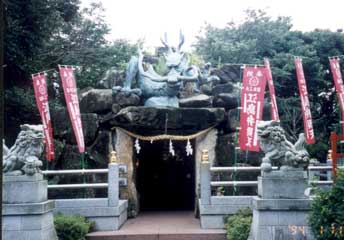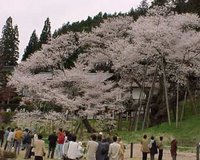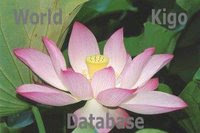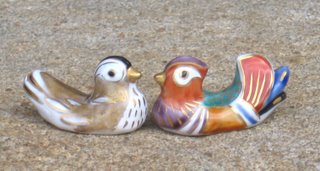[ . BACK to DARUMA MUSEUM TOP . ]
竜宮と伝説 Ryugu Legends about the Dragon Palace
:::::::::::::::::::::::::::::::::::::::::::::::::::::::::::::::::::::::::::::::::::::::::::::::::::::
Urashima Taro 浦島太郎
the Dragon Palace and the turtle 亀 kame
 Urashima Tarō (浦島 太郎)
Urashima Tarō (浦島 太郎)
is a Japanese legend about a fisherman who rescues a turtle and is rewarded for this with a visit to Ryūgū-jō, the palace of Ryūjin, the Dragon God, under the sea. He stays there for three days and, upon his return to his village, finds himself 300 years in the future.
When he goes home, everything has changed. His home is gone, his mother has vanished, and the people he knew are nowhere to be seen. He asks if anybody knows a man called Urashima Tarō. They answer that they had heard someone of that name had vanished at sea long ago. He discovers that 300 years have passed since the day he left for the bottom of the sea.
Struck by grief, he absent-mindedly opens the box the princess had given him, from which bursts forth a cloud of white smoke. He is suddenly aged, his beard long and white, and his back bent. From the sea comes the sad, sweet voice of the princess: "I told you not to open that box. In it was your old age ..."
 by Utagawa Kuniyoshi
The name Urashima Tarō
by Utagawa Kuniyoshi
The name Urashima Tarō first appears in the 15th century (the Muromachi period), in a genre of illustrated popular fiction known as otogizōshi; however, the story itself is much older, dating back to the 8th century (the Nara Period). Older sources such as Nihon Shoki[citation needed], Man'yōshū and Tango no Kuni Fudoki (丹後国風土記) refer to Urashima Tarō as Urashimako.
The change from Urashimako to Urashima Taro reflects a shift in Japanese naming customs; while the suffix -ko ("child") was originally used in both male and female names, in medieval times it was largely restricted to female names, and replaced by -tarō ("great youth") in male names. The story bears a striking similarity to folktales from other cultures, including the Irish legend of Oisín and the earlier Chinese legend of Ranka.
© More in the WIKIPEDIA !
:::::::::::::::::::::::::::::::::::::::::::::::::::::::::::::::::::::::::::::::::::::::::::::::::::::
 CLICK for more turtle toys 亀人形.
The turtle 亀 and folk toys
Tsurukame ― Crane, Tortoise and Daruma
CLICK for more turtle toys 亀人形.
The turtle 亀 and folk toys
Tsurukame ― Crane, Tortoise and Daruma
鶴亀とだるま
The Beard of Daruma was painted in the form of a snake (rather "Dragon"「蛇=龍」) in the beginning. Why did it change to a tortoise?
The beard is a snake 「蛇」
The beard is a turtiose 「亀」
. Genbu 玄武 the Turtle-snake of the North .
The Dark Warrior, the Black Warrior of ancient China
. hiiki 贔屓 / 贔負 dragon "turtle" .
.................................................................................
Aichi prefecture
. kamenori tenjin の亀乗り天神
Tenjin sama riding a tortoise .
Nanao Tenjin Shrine 七尾天神社
.................................................................................
Chiba prefecture
kameguruma 亀車 moving turtoise
 source : www.asahi-net.or.jp
source : www.asahi-net.or.jp
This is a rather unique papermachee figure.
The turtle is holding a small ricewine cup in its beak.
When the cord on the back is pulled out, the animal moves forward thanks to a mechanism with a rubber cord.
There is also another figure of a crab with the same mechanism.
.Folk Toys from Sawara town 佐原市 .
.................................................................................
Urashima Taro
 . Dolls from Kasukabe 春日部張子 .
. Dolls from Kasukabe 春日部張子 .

Koga Doll 古賀人形 from Nagasaki
(click for more Urashima Taro Dolls.)
 . otogibanashi dorei おとぎ話の土鈴
. otogibanashi dorei おとぎ話の土鈴
clay bells with motives of legends .

about 26 cm high. late Meiji period.
. Asahi tsuchi ningyoo 旭土人形 Asahi Clay Dolls .
Aichi
:::::::::::::::::::::::::::::::::::::::::::::::::::::::::::::::::::::::::::::::::::::::::::::::::::::
Back to Urashima Taro !
The gorge Nezame no Toko of the river Kisogawa
寝覚の床 lit. "wake-up bed".
The region is famous for the story of Urashima Taro who slept here on the stone formation 寝覚の床 for 300 years and then woke up.
. 中山道 The Nakasendo Road . .
.................................................................................
The historical picture scroll
"Hikohohodemi-no-mikoto Emaki 彦火火出見尊絵巻"
from Wakasa
There is a wedding scene, said to be the original story of Urashimataro.
. Umi no sachi 海の幸 food treasures of the sea .

:::::::::::::::::::::::::::::::::::::::::::::::::::::::::::::::::::::::::::::::::::::::::::::::::::::
quote
West Kagawa (Shikoku Island)
香川県三豊市詫間町箱
Once upon a time there lived in this village a young man named
Urashima Taro, a fisherman by trade. ...

At the farewell party,
Otohime 乙姫 generously produced a very, very precious-looking treasure-chest of pearls and corals.
"This is my present to you, Taro," said the Lady to her departing friend. "Please remember me sometimes."
Taro thankfully received the beautiful gift and promised that he would never forget her and the kindnesses she had done for him.
Then Otohime said: "It is very good of you to say so. But there is one more promise you must make to me - never, never take the lid off the chest."
(read the full story)
There is a port named
Hako 箱 (Chest) in Takuma-cho 詫間町.
Another interesting name in the neigbourhood is
Namari 生里 (Birthplace), which is considered to be where Taro was born.
source : kagawa/west
Honorable Urashima Taro
Drama by Coleman A. Jennings
source : google books
白炭やかの浦島が老の箱
shirozumi ya ka no Urashima ga oi no hako
the "Chest of Old Age"
. Matsuo Basho and White Charcoal .
:::::::::::::::::::::::::::::::::::::::::::::::::::::::::::::::::::::::::::::::::::::::::::::::::::::
There are various Dragon Palaces around Japan.

In Japanese legend,
Ryūgū-jō (竜宮城) is the undersea palace of Ryujin, the dragon god of the sea. It is built from red and white coral. On each of the four sides of the palace is a different season, and one day at the palace is like 100 years on earth. In legend, Urashima Tarō visits Ryūgū-jō.
As a side note, Ryugu-jo (ryuuguu joo) was said to be filled with Ryuujin (the Dragon King)'s servants, who were fish, jellyfish, or other aquatic animals. It was also said to be made of crystal, possibly.
Ryūjin (Japanese 龍神 "dragon god", also known as Rinjin) was the god of the sea in Japanese mythology. He was a dragon, symbolic of the power of the ocean, had a large mouth, and was able to transform into a human shape. Ryūjin lived in Ryūgu-jō, his palace under the sea built out of red and white coral, from where he controlled the tides with magical tide jewels.
Urashima Tarō (Urashima Taroo) (浦島太郎) is a Japanese fairy tale about a fisherman who rescues a turtle and is rewarded with a visit to the Ryūgū-jō, the Dragon Palace.
He spends many days in happiness at this underwater kingdom, however soon becomes homesick and asks to be allowed home.
©
http://encyclopedia.thefreedictionary.com/Ryugu-jo
:::::::::::::::::::::::::::::::::::::::::::::::::::::::::::::::::::::::::::::::::::::::::::::::::::::
The Dragon Palace at Enoshima
江ノ島の竜宮

From here, you walk through to the secret cave of the dragon king.
神秘の洞窟・岩屋
急な階段を下りると、正面の岩場が稚児ヶ渕。多くの釣り師が釣りをしています。急な階段を上るときは、いつも、ミニスカートの女の子がいないかなーと思ってしまいます(^^;)。残念ながら、この日も、ミニスカギャルはいませんでした。
この岩屋は、弘法大師が護摩の灰で作ったといわれている弁財天が祀られているはずです。かつては、このように霊場だったのですが、現在では観光アミューズメントパークのようになっています。平成5年に14億円をかけて整備しました!
約6000年の歳月をかけて、波が削り取った洞窟です。
第一岩屋の左側の洞窟は、神聖な意味で、女性のアソコと考えられていたようです。岩肌が、そう思わせるそうです。ボクなんて、その中に入っちゃいました.
© Miura Daikon Kuranosuke
http://www.geocities.co.jp/HeartLand-Sumire/6663/e_tabi/html/kana_enoshima.html
Katase-Enoshima Station
(片瀬江ノ島駅, Katase-Enoshima-eki) is the southern terminal station of the Odakyu Enoshima Line, located in the city of Fujisawa, Kanagawa, Japan.
The building is designed to evoke the image of Ryūgū-jō, or Dragon Palace, the underwater dwelling in the Urashima Taro fable.
© More in the WIKIPEDIA !
quote
Enoshima Jinja Shrine
... there is a famous love story that takes place between a five-headed dragon and Benten. So, you will see many dragons adorning the shrine’s premises.
Zuishin-mon Gate (瑞心門)
This white gate was created with the image of the Dragon Palace in mind. According to the myth of Enoshima, the dragon protects the island. Zuishin means “refreshed”. Before we reach this gate, we’ve already gone through two other shrine gates (one bronze, one red). As we pass between the first two gates, our mind will be rejuvenated, and at this final gate, we can feel that we are now spiritually prepared to enter the Dragon Palace.
Hetsu-no-miya Shrine (辺津宮)
- snip -
Okutsu-no-miya Shrine (奥津宮)
Tagiri-hime-no-mikoto is enshrined here. The date of its erection is unclear, but it is said that the magnificent shrine burned down once in 1841. Okutsu-no-miya is the closest shrine to Iwaya, the island caves where ancient monks once practiced. It used to be the main shrine. Next to this shrine is another smaller building, which means
“Dragon’s place”.
The mark of three scales
You will often see the mark of three triangles in these shrines. This design consists of three scales from the guardian dragon of Enoshima. In 1190, five years after a Samurai government was established in Kamakura, the man who worked as an assistant of the Shogun and who was the father of the Shogun’s wife (Tokimasa Hojo was his name) confined himself on Enoshima for the period of 21 days. He prayed for his family’s prosperity and received evidence of God’s acceptance of his prayers in the form of three scales left by the dragon. He thanked the dragon, and turned it into his family mark. His decedents for generations, following in his pious footsteps, made offerings to cover the cost of the buildings, stone steps, and so on. So any time you see the family mark anywhere in the shrines, it signifies an offering from the Hojo family.
source : japantourist.jp
:::::::::::::::::::::::::::::::::::::::::::::::::::::::::::::::::::::::::::::::::::::::::::::::::::::
どこへなとも我もおぶへ磯の亀
doko e na to mo ware mo obue iso no kame
carry me off too
wherever you like...
beach turtle
Kobayashi Issa 小林一茶
Shinji Ogawa notes, this haiku refers to a fairy tale,
"Urashima Taro." He provides this synopsis: "Once upon a time, a young man, Taro, saved a tormented turtle from the children at the beach. Later, the turtle carried Taro to a palace in the sea to introduce him to a princess. Taro spend many dreamy years and returned. When he opened the gift from the princess, white smoke came out and he became an old man with white hairs."
Issa fancies that the turtle can carry him away, too, to a magical place.
source : David Lanoue
:::::::::::::::::::::::::::::::::::::::::::::::::::::::::::::::::::::::::::::::::::::::::::::::::::::

 Entering the Dragon Palace
Entering the Dragon Palace
Senbei with shrimp and three different images of the Urashima legend.
source : www.dagaya.com
えびせんべい
. WASHOKU - Crackers (senbei) .
:::::::::::::::::::::::::::::::::::::::::::::::::::::::::::::::::::::::::::::::::::::::::::::::::::::
龍宮も今日の潮路や土用干
ryuuguu mo kyoo no shioji to doyooboshi
there is a tide way
to the Dragon palace today -
airing all things
. Matsuo Basho 松尾芭蕉 .
Basho age 34. On the day of the high tide in spring (lunar 3rd day of 3rd month).
:::::::::::::::::::::::::::::::::::::::::::::::::::::::::::::::::::::::::::::::::::::::::::::::::::::

龍宮玉取姫之図
Princess Tamatori-Hime at the Dragon Palace
Utagawa Kuniyoshi 歌川国芳
:::::::::::::::::::::::::::::::::::::::::::::::::::::::::::::::::::::::::::::::::::::::::::::::::::::
Ryugu 竜宮と伝説 Legends about the Dragon Palace
. Ryuu-oo 竜王 Ryu-O - The Dragon King .
. Tokoyo no Kuni 常世国, 常世の国 The World Beyond the Sea .
. Regional Folk Toys from Japan .
[ . BACK to DARUMA MUSEUM TOP . ]
[ . BACK to WORLDKIGO . TOP . ]
- #urashimataro #ryugu #dragonpalace -
:::::::::::::::::::::::::::::::::::::::::::::::::::::::::::::::::::::::::::::::::::::::::::::::::::::


























































